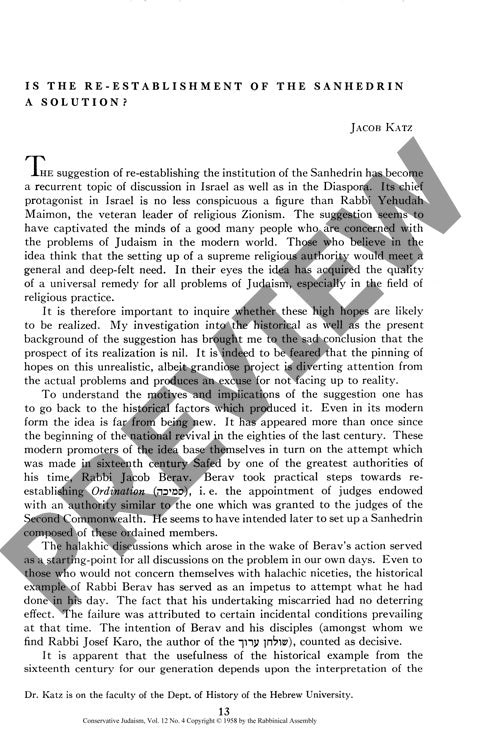Is the Re Establishment of the Sandhedri
Couldn't load pickup availability
The centuries-old dream of restoring Judaism's supreme religious court, the Sanhedrin, continues to captivate modern religious leaders - yet historical precedent suggests this vision may be more symbolic than practical. Rabbi Yehudah Maimon and fellow religious Zionist leaders' contemporary proposal for re-establishing the Sanhedrin echoes Rabbi Jacob Berav's failed sixteenth-century attempt in Safed to restore rabbinic ordination (semikhah). Through historical analysis of primary sources, comparative study of motivations, and examination of halakhic texts, this research reveals that both movements were driven primarily by messianic expectations and nationalist sentiment rather than pragmatic needs. Berav's initiative drew heavily on Maimonides' interpretation of Isaiah 1:26, while modern advocates emphasize symbolic restoration of Jewish sovereignty. The heated controversy between Berav and Rabbi Levi ben Habib demonstrates fundamental halakhic obstacles to re-establishing ordination that remain relevant today. Even if successfully reconstituted, a modern Sanhedrin would possess limited legal authority, bound by traditional interpretation rather than true legislative power. The focus on this ultimately unrealistic project diverts resources from addressing contemporary Judaism's actual challenges. Rather than pursuing centralized symbolic institutions, effective religious leadership requires individual authorities maintaining genuine connections with their communities.

More Information
-
Physical Description
-
Publication Information
Published 1958
ISBN
-
Publication Credits
Jacob Katz

